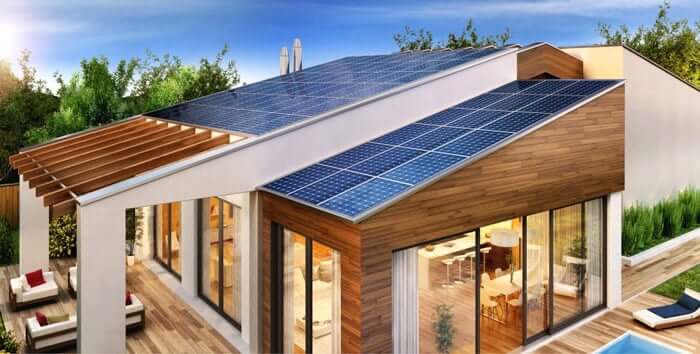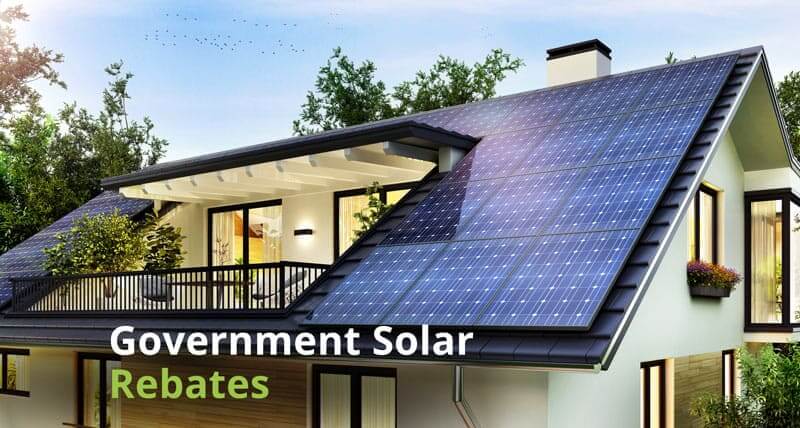Home What can a 3kw solar system run?
What can a 3kw solar system run?
Opting for a 3kW solar system is an excellent choice for powering up the necessities in a snug home, ideal whether you’re living with your partner or a bunch of mates. **The Solar** truly shines in this arena, mate! This gem effortlessly converts sunlight into ample energy, ensuring your fridge stays chilly, your lights gleam, and your telly remains on for those afternoon footy games. What’s the deal with this, you ask? Simply put, for those keen on cutting down their energy bills and embracing a greener lifestyle, venturing into solar technology is a smart decision. Picture reducing those annoying power bills while contributing positively to the environment.
Here’s a pro tip: installing a solar system might even boost your property’s value! So, why wait any longer? You’re on the verge of learning how to harness the sun’s power, converting each beam into savings and perhaps even earning a bit of extra cash if you play your cards right. Dive in, and let’s power your place with the glorious Aussie sun.
It can produce up to 2500kWh per year which should be enough to run all the typical appliances you would find in 1 bath, 2 bedroom home.
There are 3 ways to work out if a 3kW system is right for you.
Hard way: Look at the appliances you have a what a 3kW system can power on average.
The easy way: Take your monthly power bill and look at the kWs’ of power consumed. If it is around 200kWh then this is a good size system for you.
Any more and you will need to consider a larger system.

Table of Contents
ToggleAppliances a 3kw system can run
Here’s an idea of what appliances you can run on a 3kWh Solar System.
Note: All consumption values refer to the yearly average consumption for those appliances.
| Appliance | Watts per hour | Avg. Hours used daily | Total Watts |
|---|---|---|---|
| Lights for 2 bedroom home (10 x 7 Watt LED lights [60W equivalent per globe]) | 70 | 6 | 420 |
| 1 x LCD televisions | 30 | 5 | 150 |
| 1 x Laptops | 100 | 6 | 600 |
| Microwave | 1,500 | 0.3 | 450 |
| Dishwasher | 1,800 | 1.5 | 2,700 |
| Refrigerator | 35 | 24 | 900 |
| Split Air conditioner | 3,200 | 2 | 6,400 |
| Wifi | 6 | 24 | 144 |
| Washing machine | 500 | 0.5 | 250 |
| Total | 12,014 | ||
A 3KW Solar System that can produce 12kWh a day / 2,500kWh a year on average will be able to annul a considerable part of your appliance’s consumption, lowering your energy bill.
Another ideal way to determine how much a certain appliance consumes includes using a power monitor that will tell you exactly how much you’re spending in real-time. They are cheap and widely available.

How many panels will I need for a 3kw system?
The average solar panel is 37W, so to make up a 3kW system (3,000w) we will need to install 8 panels. 12 x 375W = 3kW
3kW solar system = 8 Panels or 14m2
Each panel is on average 170cm x 100cm, which is 1.7m2 per panel. This means you will need about 13.6m2 of available roof space facing north to make a 3kW system available.
You should consider getting an installer to look at your roof size and orientations to see if this will fit.
With today’s technology, your local solar installer can use Google maps to see your roof size and orientation. There will be no need for a site visit.
What to consider
Panels should be installed by a professional to ensure all safety concerns a minimalized and optimal angle for solar energy production is achieved.
Also, consider that no matter how much electrical power a 3 kWh solar system produces, the energy it produces should be used in real-time to ensure its effectiveness. Any energy that is not used while the Solar Panels are producing energy will either go to waste or will be injected into the electrical grid.
To minimize loss of power, ensure to speak to your power company about how much they will pay you for energy produced, and whether getting a solar battery is right for you.
How much will a 3kw solar system produce?
If you have ideal sunlight conditions, that means that 12 x 250w Solar Panels can produce 12kWh a day on average.

Solar Rebate Calculator
What’s the average cost of a 3kw system?
The cost of solar panel installation will depend on the state you live in (size of government rebate) and the quality of the system you intend to install.
A 3KW Solar System installed will cost on average $4,453. Below are the averages by the state for a 3kW system.
| State | 3kW Price |
|---|---|
| New South Wales | $4,453 |
| Victoria | $4,573 |
| Queensland | $4,254 |
| South Australia | $4,453 |
| Western Australia | $4,453 |
| Aust. Capital Territory | $4,453 |
How long until a 3kW pays for itself?
Your 3KW Solar System is expected to pay for itself in as little as 3 years, though it will depend on how much energy you can actually produce and use.
Another consideration is how much of that energy is used in a smart way. Are you running washing machines and hot water heaters at noon when your system is producing most of its power?
Are you storing the energy for later use or are you getting a feed-in tariff from your energy supplier?
All these variables will influence how long it will take for your panels to pay for themselves and will differ from person to person, from household to household.
As mentioned before, Battery Backup Systems can be purchased to ensure you use the produced energy when there is no sunlight, but their elevated cost still doesn’t provide an effective return and is very often not advised for regular home usage. This is expected to change as solar battery prices fall over the next 3 – 5 years but at this stage, they are too expensive.
FAQs
The 3kW solar system is an ideal choice for small and medium-size houses with a pool. 3KW solar system can generate energy up to 3000 watts, reasonable to run a 3KW inverter. The installment of 3 kW will create enough capacity to cover an enormous segment of the necessities of most houses. It can run lights, fans, refrigerator, microwave, toasters, TV, washer and most or all of the daily
electricity needs of a home with 2-3 occupants.
Generally, the 3kW solar system produces 12 kWh of usable power on average every day throughout the year. Since it is often delivering more energy at any given time during the day than a home can consume, the 3kW framework can export 6 kWh of power to the grid
Since it’s on the smaller side of the scale as far as size and capacity is concerned, a 3kW solar system is one of the less expensive choices you can avail. The real cost relies upon various variables; however, the average cost of a 3kW solar system in Australia is $4,453.
The battery stores abundant power created from solar system panels during the day so that it can be used during the night. Various other elements decide how much energy is being used at a given time and how your battery will act over the long period of usage. If your requirement is 12kW during an entire day, you will need a battery that can store at lead 10kWh of energy for use when the sun is not
shining. The energy stored will cover you for 24 hours.
The general aim when planning an off-grid battery is to get a system that is sufficiently large to supply every one of your requirements for a couple of overcast days, but at the same time, it can easily be charged by your solar panels. The battery limit is estimated in Amp Hours. You have to change this to Watt Hours. The basic computation is given underneath
X (Battery size in AH) x Y (Battery Voltage) = Z (Power accessible in watt-hours for a 20AH, 12V battery the Watt Hours figure is 20(X) x 12(Y) = 240 WH (Z)
Deciding what number of solar panels you need for your home requirements depends upon your aims. Try to figure out how much energy your family utilizes; your rooftop’s usable surface area, the atmosphere, and maximum daylight in your general vicinity and the wattage and relative productivity of the photovoltaic (PV) panels you’re thinking about. You can figure what number of solar panels you need by checking your family’s hourly energy needs by the maximum daylight hours for your region and separating that by a panel’s wattage. You are best speaking with a local solar installer to see which system will best suit you, but the most popular system is the 5kW system which has 16 panels and costs about $6,284.
Your solar panels will fulfill your energy needs for a long time. As a general solar energy industry guideline, solar panels last around 25-30 years. Solar panels are ordinarily warranted for 25 years, so you can anticipate that they should keep going at any rate that long. In many cases, studies have indicated that solar panels keep on working at diminished productivity long after the guarantee terminates.
The average energy consumption by a house hold in Australia is 17kWh. This does vary depending on the size of the home and whether it is in summer/ winter or Autumn/ spring. Usage seems to max out in summer and winter with 20kWh with the other seasons averaging about 15kWh.
It depends on what extent of sunlight you get during a day in your general vicinity. If you get 6 hours a day then,
6 * 400 = 2400 Watt-hours
That infers you can make 2400 WH of energy consistently with the end goal for you to get 3000 watts, you would require something like 2 full-sized batteries intended for enormous vehicles.
Table of Contents
Toggle




